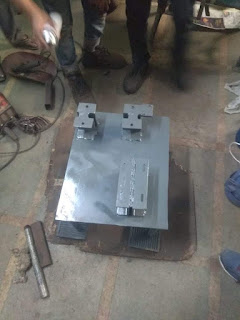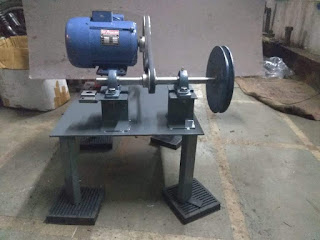IICDC Project - 1
Introduction :
In the current scenario, industries rely on the technique of predictive maintenance. These techniques are designed to help determine the condition of in-service equipment in order to estimate when maintenance should be performed.The maintenance engineers have to go to the site and need to check each and every machine part which is very time consuming and tedious. Also, several machines consist of multiple rotating mechanisms some of which are very complex and critical in operation. And even if there is any fault in checking equipment, there is a chance of huge loss to occur. An effective diagnose system is required to check the condition and reliable lead time of the machine. The ultimate goal of the approach is to perform maintenance at a scheduled point in time when the maintenance activity is most cost-effective and before the equipment loses performance within a threshold.
In our proposed solution we have tried to take a step forward in this technique of predictive maintenance. So our idea is to monitor and predict the condition of a machine using Artificial Intelligence based on vibration analysis.
Description :
Vibration analysis is defined as a process for measuring the vibration levels and frequencies of machinery and then using that information to analyze how healthy the machine and its components are. Anytime a piece of machinery is running, it is making vibrations.
Vibrations are eminent but in case they exceed a certain value the machine will experience dysfunction causing an undesirable and inefficient outcome. If the amplitude of the vibration sensor are passed beyond certain value then it indicates that some problem has occurred. This deviation in vibration might result in the breakdown of the machine and cause severe damage.
Vibration analysis can detect problem such as:
- Imbalance
- Bearing failures
- Mechanical looseness
- Misalignment
- Resonance and natural frequencies
- Electrical motor faults
- Bent shafts
- Gearbox failures.
- Empty spaces or bubbles (cavitation) in pumps
- Critical speeds
The vibrations occur due to different sources in order to distinguish between these vibration sources furthermore the defect in any of the components will then be taken into account using Artificial Intelligence.
Project Setup :
1. Mechanical part :
For demonstration, the product is currently tested in a setup where we have purposely added some defects so that the system produces the necessary vibrations. However assumed sources of vibrations taken into account in this project are bearing defect, shaft misalignment, and unbalanced mass.
The following is the project setup :
2. Mounting sensors :
We have used boostxl sensor to sense the vibrations and Msp432 launchpad for further processing. Due to occurrences of the defects the frequency at which the shaft is vibrating will start deviating from its natural frequency. These vibrations are sensed by the boostxl sensor and further transferred to the Msp432 launchpad.


3. Software part :
The setup should be trained before itself. All the possible vibrations due to defects that may occur should be analyzed by engineers or trained vibration analysts. The training set is the material through which the computer learns how to process information.
A well trained dataset is required for an efficient system. Hence, training of the datasets is the most important and crucial part.
Project demonstration :
Conclusion :
As far as the implementation of the product is concerned, it is not difficult. The product is currently tested in setup but then can be tested on various types of machines in industries. First, we need to identify the defects once they are identified we need to work on the mounting parts. Once all these procedures are completed, the product can be applied. In the current scenario, maintenance is carried out manually were as in our product with the help of AI we are predicting the defect in any of the machines more smartly and accurately. This product can be implemented in several industries which consist of a fleet of machinery and taking care of each and every machinery is humanly impossible, hence the need for a smart system is most felt in such a situation. The innovation can be protected using security software which enables the user to see the interface data can be handled by the developer only. The idea of innovation being monetized depends upon the extent to which the innovation is being utilized. Predictive maintenance has been there for a while but its's integration with the AI has given it a whole new perspective as the analysis and segregation can be done with the help of the single system.The potential Customers are industries paper iron and steel, manufacturing industry, textiles, and so on. In case the system happens to produce different defects than those taken into consideration while previously trained AI then AI have to be trained for improving the performance and the efficiency of the system.










Post a Comment